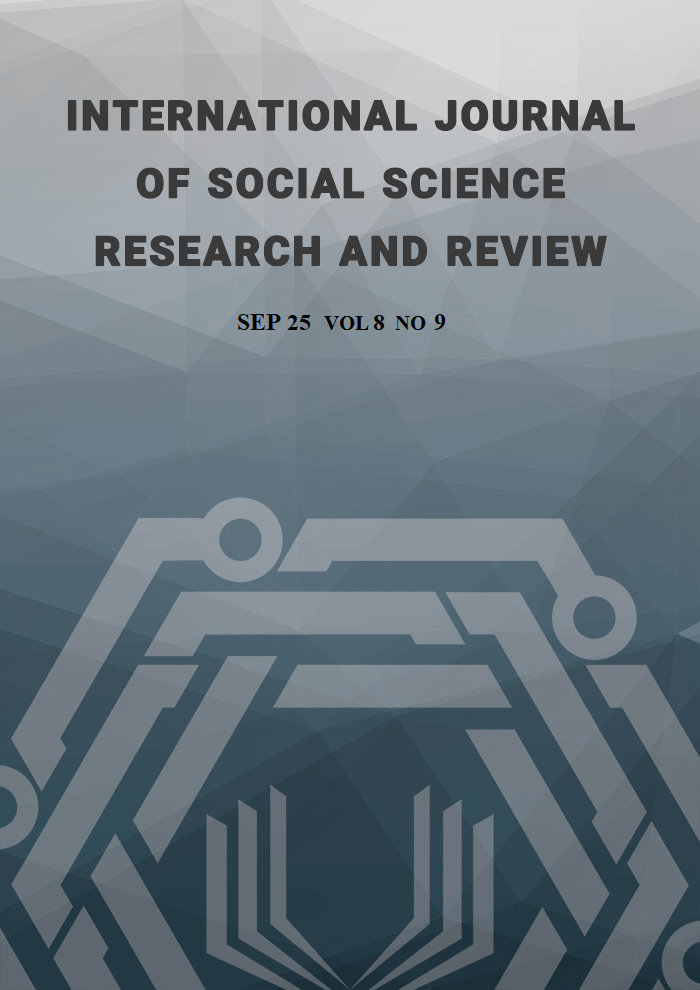A Study of Association, Assimilation and Adaptation Among Second-Generation Indian American Youth
Abstract
This paper is an exploration of the ideas of assimilation, identity and cultural adaptations among second generation Indian-American youth. There is a growing community of Indians in the U.S. who have migrated in many waves, as laborers, traders, students, etc and have not only made it their home, but have significantly contributed to the American society, culture, polity and economy. The second-generation youth are of central interest to this study. By incorporating perceptions, attitudes and reflections of second-generation youth through a survey instrument, this paper delves into the processes of association and negotiation that youth of migrant communities undergo in their everyday life which defines their dual-identities. The findings reveal a dynamic relationship that these youths share with their ethnic identity and their American one.
References
2. Berry, J. W. (1997). Immigration, acculturation, and adaptation. Applied Psychology: An International Review, 46(1), 5–34. IAAP Journals.
3. Bhatia, S., & Ram, A. (2001). Rethinking “acculturation” in relation to diasporic cultures and postcolonial identities. Human Development, 44(1), 1–18.
4. Bhatt, A. (2018). High-Tech Housewives: Indian IT workers, gendered labor, and transmigration. University of Washington Press. SAGE Journals.
5. Brah, A. (1996). Cartographies of diaspora: Contesting identities. Routledge. Google Scholar.
6. Chacko, E., & Menon, R. (2012). Longings and belongings: Indian American youth identity, folk dance competitions, and the construction of “tradition.” Ethnic and Racial Studies, 36(1), 97–116.Rutgers University Press.
7. Chand, V. (2009). Heritage language maintenance in the United States: The survival of Hindi and Gujarati among the Indian diaspora. International Journal of Bilingualism, 13(3), 233–249. Taylor & Francis Online.
8. Cohen, R. (2008). Global diasporas: An introduction (2nd ed.). Routledge. ResearchGate.
9. Dasgupta, S. (2002). Not a bar of soap: Indian American youth negotiating identity. Harvard Educational Review, 72(3), 367–389. Wiley Online Library.
10. Espiritu, Y. L. (1992). Asian American panethnicity: Bridging institutions and identities. Temple University Press.
11. Foner, N., & Alba, R. (2008). Immigrant religion in the U.S. and Western Europe: Bridge or barrier to inclusion? International Migration Review, 42(2), 360–392. Taylor & Francis Online.
12. Gans, H. J. (1979). Symbolic ethnicity: The future of ethnic groups and cultures in America. Ethnic and Racial Studies, 2(1), 1–20. PMC.
13. Ganapathy-Coleman, H. (2014). Asian Indian Hindu parents’ ethnotheories of moral and religious education. International Journal of Behavioral Development, 38(4), 342–351. ResearchGate.
14. Gleason, P. (1983). Identifying identity: A semantic history. The Journal of American History, 69(4), 910–931. JSTOR.
15. Gupta, N., et al. (2010). Dietary acculturation and its impact on Asian Indian immigrants’ health. Journal of Immigrant and Minority Health, 12(3), 215–223.
16. Hall, S. (1990). Cultural identity and diaspora. In J. Rutherford (Ed.), Identity: Community, culture, difference (pp. 222–237). Lawrence & Wishart. Google Books.
17. Helweg, A. W., & Helweg, U. (1990). An immigrant success story: East Indians in America. University of Pennsylvania Press.
18. Joshi, K. Y. (2012). New roots in America’s sacred ground: Religion, race, and ethnicity in Indian America. Rutgers University Press. ResearchGate.
19. Khandelwal, M. S. (2002). Becoming American, being Indian: An immigrant community in New York City. Cornell University Press. PMC.
20. Kurien, P. (2001). Religion, ethnicity and politics: Hindu and Muslim Indian immigrants in the United States. Ethnic and Racial Studies, 24(2), 263–293. JSTOR.
21. Lee, J., & Zhou, M. (2015). The Asian American achievement paradox. Russell Sage Foundation.
22. Levitt, P. (2003). “You know, Abraham was really the first immigrant”: Religion and transnational migration. International Migration Review, 37(3), 847–873. Cambridge University Press & Assessment.
23. Maira, S. (2002). Desis in the house: Indian American youth culture in New York City. Temple University Press.
24. Mishra, S. K. (2016). Desis divided: The political lives of South Asian Americans. University of Minnesota Press. (Publisher page not freely accessible; see scholarly review) SAGE Journals.
25. Mukherjee, A., & Pattnaik, B. K. (2021). Assimilation and symbolic ethnicity through the class-ethnicity nexus: A study of second-generation Indian immigrants in the U.S.A. South Asian Diaspora, 13(2), 199–215. https://doi.org/10.1080/19438192.2021.1893011 Cambridge University Press & Assessment.
26. Pew Research Center. (2012, July 19). Asian Americans: A mosaic of faiths (Overview). https://www.pewresearch.org/religion/2012/07/19/asian-americans-a-mosaic-of-faiths-overview/ Harvard Medical School.
27. Pew Research Center. (2013, February 7). Second-generation Americans: A portrait of the adult children of immigrants. https://www.pewresearch.org/social-trends/2013/02/07/second-generation-americans/ Academia.
28. Portes, A., & Rumbaut, R. G. (2001). Legacies: The story of the immigrant second generation. University of California Press. Cambridge University Press & Assessment.
29. Portes, A., & Schauffler, R. (1994). Language and the second generation: Bilingualism yesterday and today. International Migration Review, 28(4), 640–661. Cambridge University Press & Assessment.
30. Rajagopal, A. (2001). Politics after television: Hindu nationalism and the reshaping of the public in India. Cambridge University Press. Cambridge University Press & Assessment.
31. Rumbaut, R. G. (2008). The coming of the second generation: Immigration and ethnic mobility in Southern California. The Annals of the American Academy of Political and Social Science, 620(1), 196–236.ResearchGate.
32. Toppelberg, C. O., & Collins, B. A. (2010). Language, culture, and adaptation in immigrant children. Child and Adolescent Psychiatric Clinics of North America, 19(4), 697–717. ResearchGate.
33. Zhou, M., & Bankston, C. L., III. (1998). Growing up American: How Vietnamese children adapt to life in the United States. Russell Sage Foundation.

This work is licensed under a Creative Commons Attribution-NonCommercial-NoDerivatives 4.0 International License.
Copyright for this article is retained by the author(s), with first publication rights granted to the journal. This is an open-access article distributed under the terms and conditions of the Creative Commons Attribution license (https://creativecommons.org/licenses/by-nc-nd/4.0/).





